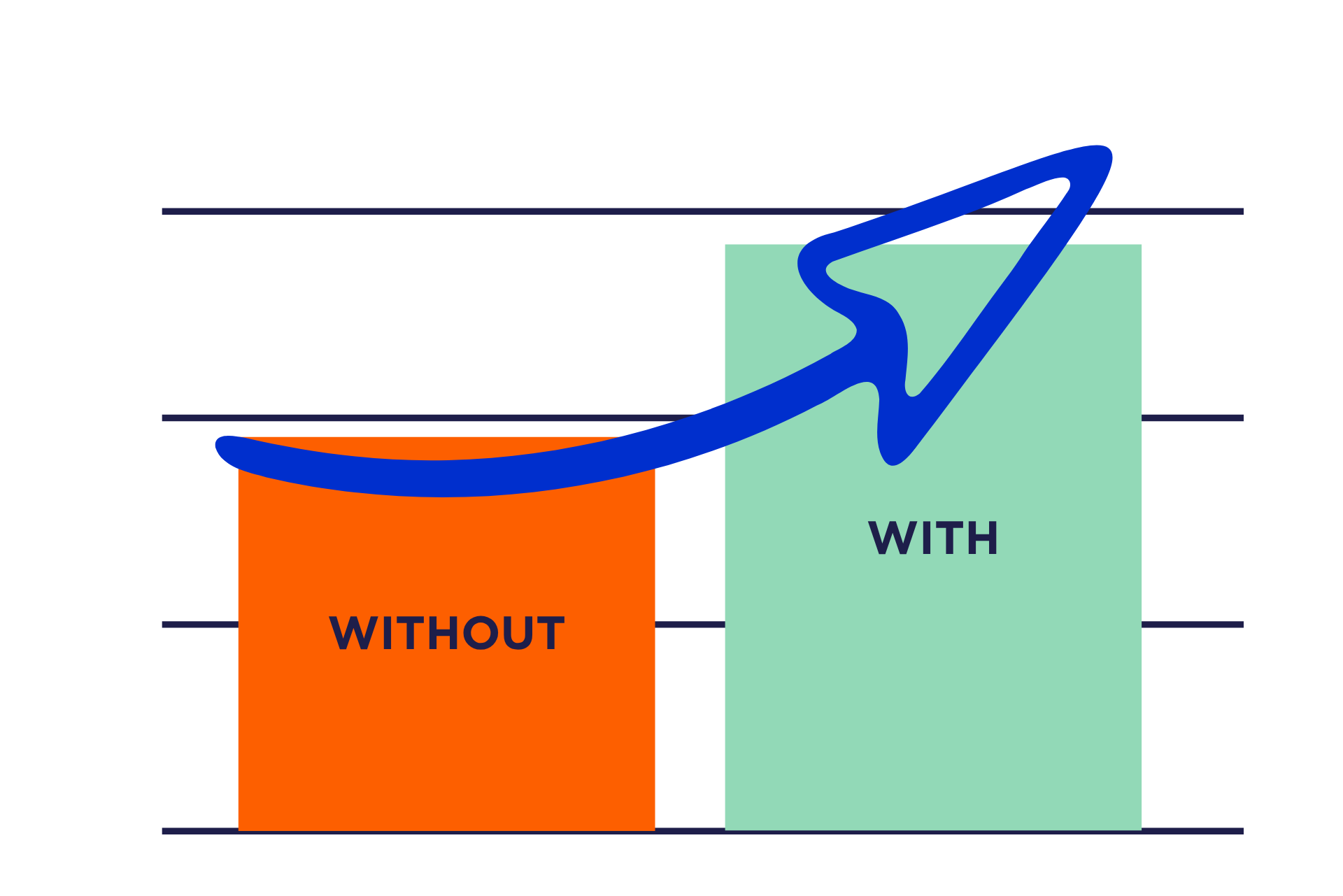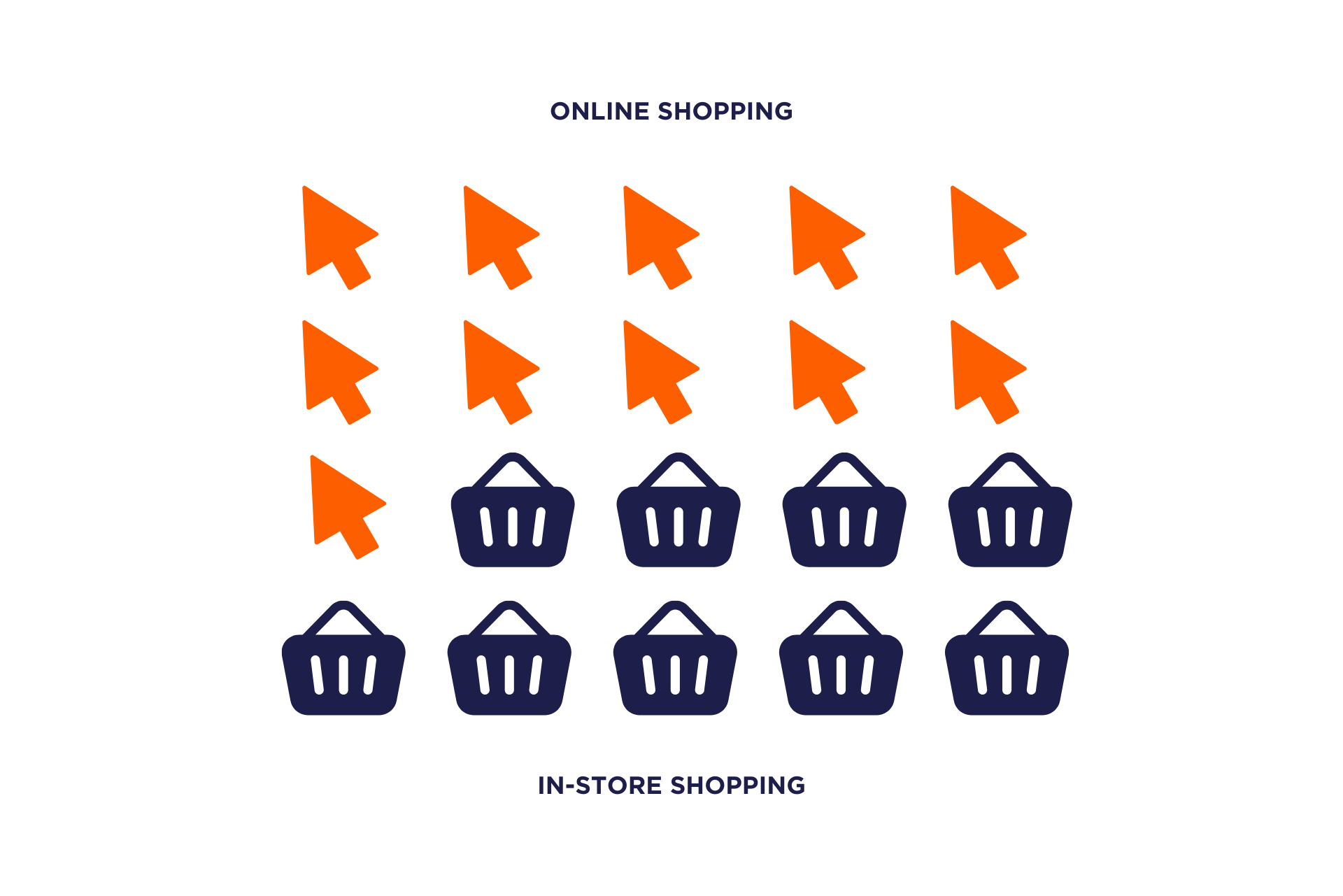10 statistics every retail marketer needs to know
In retail, every metric tells a story. Behind buzzwords like personalization, loyalty, and omnichannel, there are real commercial pressures: to grow without margin erosion, retain customers beyond the first purchase, and create experiences that feel rewarding.
The data is clear: traditional approaches aren’t cutting through like they used to.
So here are 10 statistics that reveal where consumer expectations are headed – and how retail marketers are evolving in response.

Personalization doesn’t just improve the customer experience – it transforms commercial outcomes.
The top-performing retailers in this space are boosting consumer spending by an average of 38% more than those slower to adapt.
What sets them apart is their ability to turn customer data into meaningful, one-to-one interactions that drive engagement, spend, and brand affinity.
We see this every day: brands that shift from transactional tactics to emotionally engaging, personalized strategies create stickier customer relationships and stronger bottom-line results.
It’s not about offering more promotions. It’s about offering the right ones, to the right people, in a way that deeply resonates.

Why this matters:
This isn’t a marginal gain, It’s a material revenue lift - and a critical result given the ongoing impact of tarrifs, inflation, and changing consumer behavior. For retailers relying on generic campaigns or price-led promotions, this is a clear call to reassess tactics.
With the right platform and strategy, personalization goes from buzzword to performance lever. We know that it delivers, so the only question is how fast you can start scaling it.


Shoppers aren’t always chasing the lowest price – they’re willing to pay up to 16% more when the experience feels tailored, relevant, and human.
This is the power of creating an emotional connection. When a customer feels truly seen and valued, they don’t just stay loyal; they spend more, and more often.
For retailers under pressure to drive revenue without eroding margin, this is a game-changer. It proves you don’t have to compete on price – you can compete on added value like the overall experience your brand provides.
That’s where personalized, brand-aligned reward strategies come in. Brands can create those high-perceived-value moments at scale, without the cost (or chaos) of discounting.
Why this matters:
In a world of instant price comparisons and deal fatigue, this 16% premium shows that brands aren’t only set apart by what they sell. It’s also how they make customers feel.
Personalized experiences aren’t just good CX – they’re a strategic lever to protect margin, elevate perception, and grow spend. And with the right reward strategy, you can deliver more value while protecting (and growing) your margins.

Despite the growth of e-commerce, 45% of consumers still prefer shopping in physical stores. It’s a massive opportunity for retailers to double down on what stores do best: human connection, tactile experience, and instant gratification.
However, expectations are higher than ever. If someone chooses the store over a swipe, they want more than convenience – they want added value. That means attention, recognition, convenience, and community, and this is where personalized in-store experiences matter most.
Brands can bridge the digital-physical gap by bringing customer insights, rewards strategy, and emotional relevance directly to the shop floor.

Why this matters:
Foot traffic alone isn’t enough. Today’s store visits must be memorable.
With the number of consumers who still prefer in-store, the priority isn’t driving visits – it’s converting those visits into revenue (without eroding margin and brand equity by discounting).
If you use in-store moments to deliver personalized value and emotion (not just transactional service), you’ll start to turn preference into profit.
One great example? Offering tourists Broadway and Off-Broadway tickets when they made a purchase at Banana Republic in New York – converting visitors into new customers while giving them an iconic city experience.


Customers who shop across channels – including store, app, and online – are up to 3.5x more valuable than those who stick to just one. Customers who engage more also browse more and ultimately buy more.
Rather than being everywhere, unlocking that value means connecting the dots.
When brand experiences feel seamless and cohesive, customers move more freely between platforms and channels.
That’s when loyalty deepens, followed swiftly by spend.
When it comes to loyalty programs, this one’s non-negotiable: they need to live across the entire retail ecosystem.
From tailored rewards to always-on engagement, retailers can turn fragmented journeys into one connected, high-value customer lifecycle.
Why this matters:
Every disconnected touchpoint is missed potential. But when your acquisition, engagement, and reward strategies work together, you turn browsers into buyers and buyers into brand fans.

Personalization isn’t just a “nice touch” anymore: it’s table stakes. 71% of customers expect personalized experiences and when they don’t get them, 77% feel frustrated. That’s more than a missed opportunity – it’s a brand risk.
Frustration is emotional, and it lingers. From ignored preferences to irrelevant emails, inconsistent experiences quietly chip away at trust, loyalty, and lifetime value. Customers don’t want to feel like one of many, they want to feel recognized and appreciated.
Brands need to deliver that recognition at scale, in an economically viable way. Whether it’s finding the most relevant touchpoints for next-level personalization or using insight-led segmentation to enhance offers, rewards programs must make every interaction feel like it was made for your customer.

Why this matters:
The numbers tell the story here: if you’re not personalizing, you risk underdelivering on CX and actively eroding value. Expectations are rising, and the brands who win will be those that treat personalization as a baseline.
The good news? With the right tools and strategy, consistent, omnichannel personalization isn’t just possible. It’s profitable.


Every time a loyal customer slips through the cracks, replacing them costs 5 to 25 times more.
Acquisition is expensive. You’re paying for ads, promotions, partnerships… all for someone who may never convert.
Meanwhile, your existing customers are ready to spend again – if you give them a reason to stay.
Enter emotional engagement. Rewarding the right behaviors across the customer lifecycle makes your acquisition spend go further: it doesn’t just buy a click, it builds longer-term value.
Why this matters:
If you’re spending too much time chasing new customers while existing ones slip away, you’re losing margin at both ends. But when retention becomes a strategic priority – backed by relevant, personalized incentives – you spend smarter and earn more. That’s how to keep shifting from short-term wins to sustainable growth.

Sometimes the smartest growth move isn’t to do more: it’s to lose less. Just a 5% increase in customer retention can drive profit growth of 25% to 95%. Numbers like that are transformative at any time, but during periods of intense economic volatility, they’re critical.
Retained customers are efficient. They cost less to serve, spend more, and advocate harder for your brand. And yet, many retailers are still investing more in acquiring new customers than keeping the ones they’ve already won.
Brands can shift that balance by using personalized, emotionally resonant rewards programs to turn occasional shoppers into loyalists, and loyalists into lifetime value.

Why this matters:
If you knew you could nearly double your profits by keeping just 5% more customers, you would act on it: now you have the proof.
There’s a real number on what loyalty really means to your bottom line. With the right reward strategy in place, retention isn’t a back-end metric – it’s your most cost-effective growth engine.


Data privacy issues are at an all-time high, but 90% of customers are willing to share behavioral information if it improves their experience or saves them money.
Prove that there’s a payoff and you’ll open the door to richer insights. When shoppers feel like their data leads to better rewards, smarter offers, or more relevant experiences, they’re much more open to sharing it: it’s a fair value exchange. When brands are clear about data usage and show that they care about actively protecting that data, it adds another layer to this relationship of trust.
With up-to-date behavioral information, you can build tangible outcomes – like using zero and first-party data to serve shoppers experiential, rewards that tie directly to their passions. This is when it becomes crucial to pick a rewards partner whose values and data policies are aligned with yours: once you’ve earned that customer trust, it must be protected at all costs.
Why this matters:
If 9 in 10 customers are willing to share data but you’re dealing with insight gaps, it’s time to revisit how you’re using (and communicating) personalization.
With the right strategy in place, behavioral data becomes the fuel for relevant personalization, deeper engagement, stronger loyalty, and more efficient marketing.

Almost two-thirds of customers say their loyalty hinges on how a brand makes them feel, not just what it sells. Product and price might win the basket, but experience is what keeps them coming back.
While marketing gimmicks and freebies have their time and place, this about relevance, recognition, and seamless omnichannel journeys that feel deeply tailored to individuals.
It’s important to design incentive-led programs that elevate the entire customer experience – so that from first click to repeat purchase, every interaction builds value and affinity. The goal is an experience that feels effortless but works hard for your brand behind the scenes.

Why this matters:
Loyalty isn’t just earned through points (and it’s definitely not down to discounts). It’s built through more genuinely engaging moments.
This statistic is a clear reminder: when your experiences are personalized, meaningful, and brand-aligned, you shift from one-time transactions to long-term relationships. Make them memorable to make them count.


Brands that focus on personalized experiences see a 46% increase in customer spending on average. Not because they push harder, but because they connect better.
When the experience feels tailored (read: when the offers, rewards, and messaging reflect what customers actually care about), purchase intent jumps. Frequency goes up. Baskets get bigger. And best of all, when customers feel like a priority rather than a sales target, they’re more likely to return.
With the strategic use of emotionally driven, high-perceived-value rewards, brands can keep giving customers reasons to come back and spend more. Done right, this approach is highly personalized, scalable, and built to grow value without eroding margin.
Why this matters:
Personalization isn’t just a retention play – it’s a revenue generator. If you’re under pressure to deliver more with less, this is the performance lever worth pulling.
Building smarter retail relationships: Your path to sustainable growth
The numbers don’t lie – retailers investing in stronger customer relationships are seeing better results. Whether it’s higher spend, deeper loyalty, or more efficient ROI, brands that prioritize relevance and recognition are pulling ahead.
However, driving better results takes more than personalization, loyalty schemes, or omnichannel presence in isolation. It involves shifting from chasing transactions with generic, short-term promotions to longer-term growth that drives behavioral change. And the key to that behavioral change is experiences that connect with what customers truly care about.
At TLC, we help brands build dynamic, curated rewards programs that do all of the above:
- Incentivizing smarter
- Engaging deeper
- Creating outcomes that drive measurable results across acquisition, engagement, loyalty, and lifetime value.
And while the retail landscape keeps evolving, one thing hasn’t changed: relationships drive results. To win in 2025 and beyond, your brand needs to do everything it can to build better ones.



